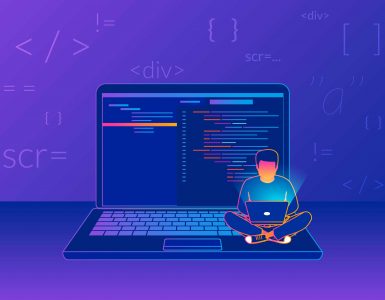Python is one of the fastest-growing programming languages that continue to soar in popularity. According to Tiobe, a software quality assurance company that indexes the popularity of programming languages every month, the popularity of Python is at an all-time high.
The programming language yet again topped in its August 2022 rankings. When so many new technologies are emerging every day in the software development industry, one might wonder why the popularity of Python is still soaring.
According to the Tiobe index report, Python seems unstoppable because it’s hard to find a field of programming in which the programming language is not used extensively nowadays. From web development to data science, it has applications in every domain.
First developed by Guido van Rossum in the 1980s, Python started seeing a significant uptick in its adoption when Python 2.0 was released in 2000. It had many important new features such as cycle-detecting garbage collector, memory management, and support for Unicode. The most recent Python 3.0 was released as a backward-incompatible update in 2008. The release corrected some fundamental design flaws in the language and made it much more robust and fit for modern software development.
In this post, we look closely at why Python continues to grow in popularity.
1. Simplicity
One distinctive feature of Python from other programming languages is its simplicity. The ease of learning, understanding, and use make it easy to adopt. People with little or no software development experience can use Python to build applications. It is one of the most studied programming languages in the world, as we discovered by JetBrains’ State of Developer Ecosystem research. The simplicity of adoption is a major driving force behind the increasing popularity of Python. Universities, online schools, and companies are using Python as the first programming language to teach the fundamental coding principles to students and employees. Anything can be achieved using Python, whether it’s web development, writing scripts to automate tasks, or analyzing vast amounts of data. Given its scope of application, Python keeps attracting newcomers.
Here are some quality Python learning resources.
2. Versatility
If you are an experienced programmer, you will appreciate not only Python’s fully featured object-oriented approach but also its versatility and cross-platform compatibility. Not many languages can combine OOPS and cross-platform compatibility like Python. Most experienced programmers use Python to write admin scripts or “duct tape” code that can bind applications together in a toolchain. This feature is important as it allows freedom to test code without building an environment from scratch to run the code. Unsurprisingly, Python has many applications in DevOps and testing automation.
Not only on-premise environments but cloud platforms also support Python, given its incredible applications. You can deploy Python on any operating system, including Windows, Linux, Mac, or any cloud platform. Even some of the popular cloud platforms offer Python as a cloud-based “function as a service,” for instance, AWS Lambda, Azure Functions, and Google Cloud Functions.
3. Open-source and extensible
Python is an open-source programming language. It implies it has zero start-up costs and no barriers to entry. Anyone can download the interpreter and development tools to start building Python applications. It is another reason why Python continues to grow in popularity even when premium alternatives are available. Another benefit that works in its favor is how extensible Python is. Hundreds of thousands of freely available open-source packages further extend Python’s core functionality for application development. With a simple “pip install,” you can import and use any Python library or package. Due to its vast community support and growing popularity, Python has dethroned JavaScript as the most discussed programming language on the popular developer community platform, Stack Overflow.
4. Data Science applications
Modern websites and applications produce a humongous amount of data. This is why data has become the single most valuable commodity today. But raw data is not helpful, and Python offers a wide array of options to collect, analyze, and represent data in meaningful information.
There are several Python libraries dedicated to data science and numeric computation. NumPy, TensorFlow, Keras, PyTorch, Pandas, Scikit-learn, and PySpark are the Python libraries used for data analysis, machine learning, significant data transformations, and neural networks. The JetBrains survey we mentioned above found that 49% of the respondents use Python for data analytics and 42% for machine learning applications. Due to its scope of use in modern AI and machine learning applications, Python developers are in high demand and will continue to be so for the foreseeable future.
Conclusion
These are some of the significant reasons why Python is growing at such a fast pace. Its incredible applications in modern software development and AI and machine learning further boost its popularity among beginners and experienced developers. As a Python developer, you can explore almost any domain of software development.
Talent500 is where Python developers can find truly challenging and career-redefining opportunities with fast-growing start-ups and Fortune 500 companies. To know more sign up here.






Add comment